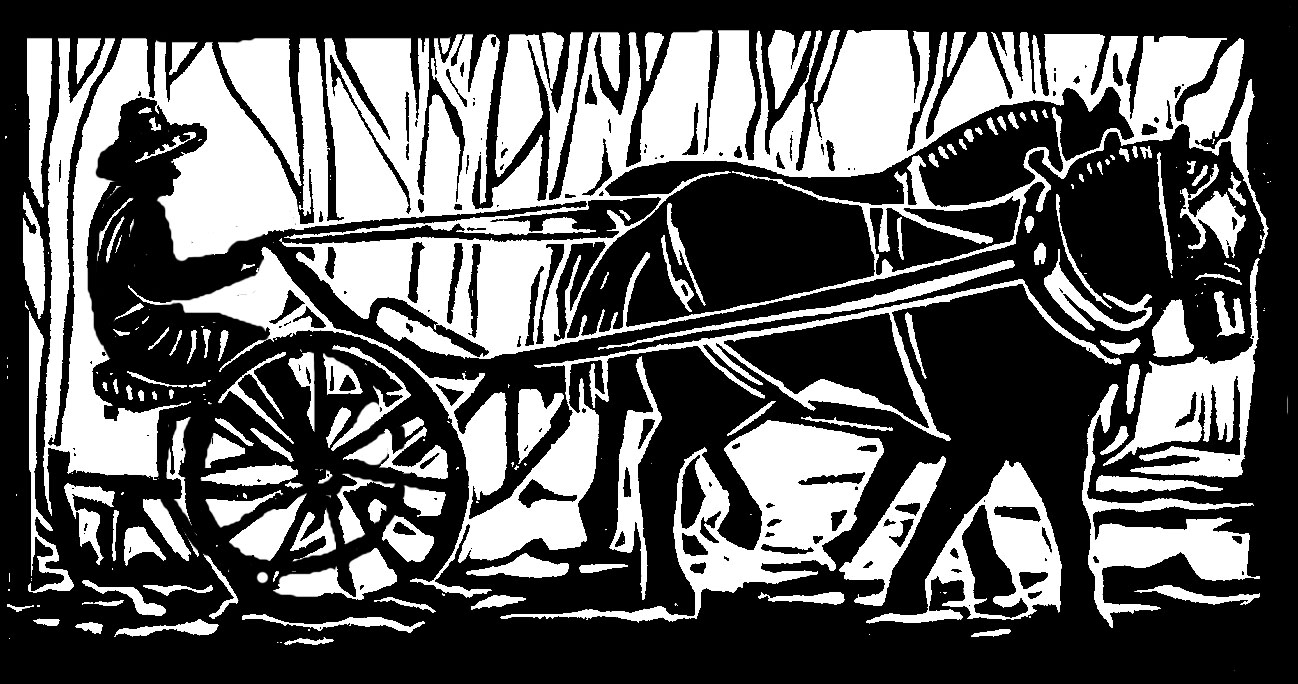We recently hosted a draft horse workshop on our vegetable farm. Seven good people, hailing from Vermont, New Hampshire, and New York, came to us on a Sunday afternoon to learn about vegetable production with draft power.
We enjoyed talking to these budding horse farmers, who ranged from a couple who already has a garden, a team of horses, and full time jobs as teachers and/or guidance counselors (a perfect set-up for a successful vegetable farm-- two outside sources of income!) to a Dutch fellow that had come along as company with a friend. “I'm not a farmer,” he said, and the friend answered “Yet,” smiling at him.
The workshop went well, with a practical demonstration of readying a field for garlic and fall cover crops, as well as a chance to drive Molly and Ben, two of our horses. We also had lots of conversation about the various implements we have and use here, and the various implements we have and don't use here (generally wrested rusty and busted up from an old hedgerow and donated by kind, well-meaning folks), and the various implements we don't have and would like to use here (all eloquently described by my farmer fellow, who generally has some wonderful horse drawn implement in mind that cost only $2000! and would greatly benefit the farm, if not the farm budget).
We ended the workshop with good-byes and good lucks, and with a reminder to check the recent article on the NOFA-NH (who sponsored the event, along with the National Center for Appropriate Technology) website for more of our words of horse-farming wisdom.
Now these words of wisdom come to all of you budding vegetable- and horse- farmers, so that you can contemplate your next glamorous career change, and so that you don't feel too sad about missing our nice workshop.
Three Basic Tips (with notes) for Starting in with Draft Animal Power on the Farm
Love your draft animals.
1. Think marriage, not summer romance. Working with draft animals is a relationship, and if you want to be in it for the long haul, you're going to be ecstatic, enraged, bored, happy, frustrated, sad, content, joyful, ready to quit, ready to keep on, and everything in between. A good teamster thinks of the animals first, even when everything else on the farm might be going wrong.
2. Consider temperaments, both your own and your draft animals. Do you enjoy the slow, steady pace of oxen, or the peppier step of a team of horses? Or do you have no idea? Find out. First. Before you buy any. Once you buy, you're going to be housing, feeding, and tending your hungry big critters, and all that housing, feeding and tending has to happen whether you ever get your garden plowed or not.
Find good mentors.
1. Find a friendly, experienced draft horse or oxen farmer (or two or three), preferably living next door, and with ample time and abundant energy to spend with a teamster-wanna-be. In lieu of that, you may have to travel a little. Expect to pay for the privilege of learning from all that experience and friendliness, either through formal workshops costing money or through less formal barters of your time and labor and your unfailing good will and respect for a busy farmer's help.
2. Find a friendly, experienced pair of horses or oxen for a first team. They will teach you as much as your farmer-mentor. That beautiful matched team of snorting high headed high steppers may be fantastic for a long-time teamster, but not for a beginner. And that adorable pair of fuzzy foals or calves will not learn with you; they will walk all over you, and you will all end up sadder and perhaps no wiser.
Think in pairs.
1. There's nothing cuter than a draft pony on a cart, but single horse machinery is a lot harder to find than double. (We don't claim to know much about oxen - except we've only seen them driven in pairs at the county fair.) And horses and oxen, working or not, tend to like company of their own kind.
2. Any draft animal, of course, has to be paired with an implement in order to get any farm work done. There are farm auctions and machinery dealers, and there are lots of busted up old plows and rakes and cultivators and hayloaders in hedges. Do your research before you haul out your wallet: how much should a plow of this age and condition go for? Do I have the skills and tools to patch it up when it breaks? Or do I have the money to pay someone else to patch it up? And by the way, do I even know how to use the thing?
Originally published in the Monadnock Shopper News, Oct 1– Oct 7, 2014

